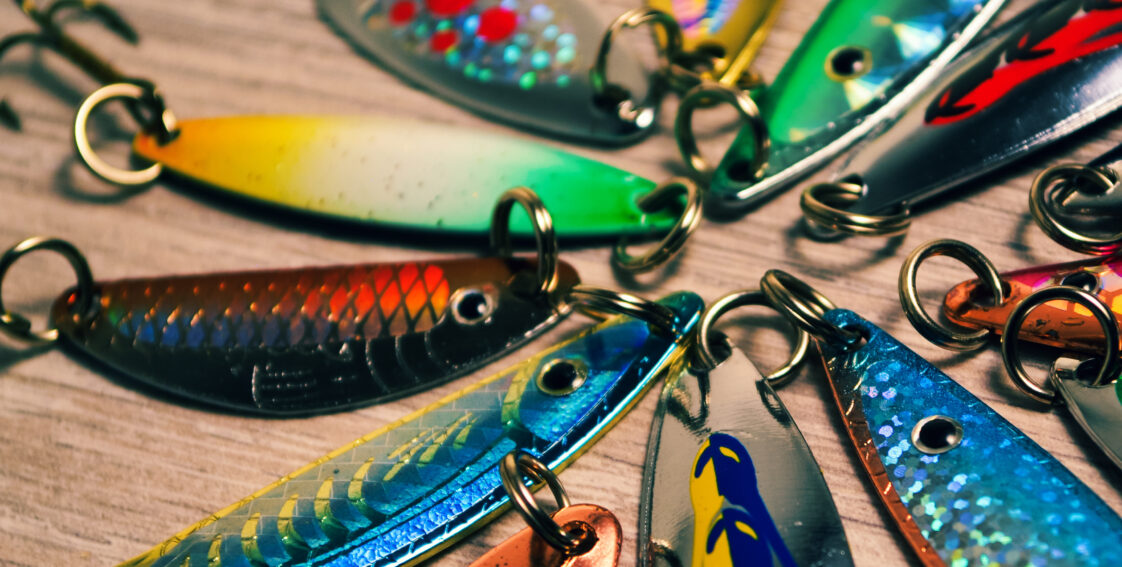
Fishing with Spoon Lures: Basics, Types, and Tips
Among the most popular lures used by fishing enthusiasts today are fishing spoons. They are effortless to use and perfect for practicing retrieving, jigging, casting, and other fishing techniques. They’re a versatile lure, and all you have to do is throw, reel, and catch, as spoons act as triggers for every predator species swimming in fresh or salty water worldwide.
The Basics Of A Spoon Lure
The spoon lure’s working mechanism is reliant on its size and thickness. For example, a longer lure has a more wide wobble compared to a shorter one, while a profound concave one produces a broader wobble than a flat one. Thin spoons are ideal for trolling, they have a more erotic wobble than thick lures. Thick spoons sink faster and roll deeper.
These spoons can be cast, trolled, jigged, or swung in any part of the water column; if you maintain a firm grip, you’ll catch many fish. These lures appeal to the sense of sight, hence making them more convenient in clear or lightly stained waters.
Common Types Of Fishing Spoons
There are extensive varieties of fishing spoon lures. Many of them have unique actions, and you can choose the most suitable setup based on where and where you fish. For tips on keeping your lures and gear organized, read our blog 5 Tips for Organizing Your Tackle Box!
Traditional
Also known as stamped metal casting spoons, traditional spoons are famous for their distinctive back and forth wobble action and their oval-shaped cupped bodies, which permit underwater casting. The sizes range from ultra-light for species like pike, lake trout, and big muskies: and the most popular sizes for bass and walleye species.
Trolling
These are lighter and thinner compared to casting spoons to allow slow and easy trolling. They are ideal for species like walleye, Salmon, and trout found in open water, with profound control rigs to catch fish species.
Weedless
If you are fishing in deep covers where predators are known to hide, this is ideal. Weedless spoons are designed using wire guards which keep away snags and allow a range of retrieval methods. These lures will enable you to pause and twitch to allow settling of the spoon in open holes as a casting technique.
Surface
Also called topwater spoons; these are ideal for fish species who like hiding under thick water covers like Pike, bass, and musky. Most are made of plastic with a few wooden with an added rubber skirt attractor. Once you have cast over the body, start reeling to retrieve as fast as possible to keep the lure on the water surface.
Jigging
This spoon is ideal for deep structure predators, so when you see a deep water school of walleye or bass fish, take your jigging spoon. They’re made from Tungsten or metal, are flat, thick, and have a heavy splash upon vertical jigging. They are meant to reach down faster for the deep-water holding species.
Use A Tackle Box Made For Hanging Spoons
If you want to access and locate your best lures quickly, a good tackle box helps. Make all your fishing trips efficient with a tackle box designed for keeping hanging spoons in place and tangle-free. Check out Special Mate Tackle Boxes for a quality product, made in Michigan and designed to make your life easier. They have unique features and qualities like heavy-duty dual locking latches for positioning. The flip dividers are durable to ensure the body bait and spoons remain untangled and easily accessible. We have small, medium, and large-sized tackle boxes, check them out here!
Conclusion
Spoon lures have a straightforward and basic design with an oblong shape and a concave side to catch the water, which produces a light and wobble reflection flash to cripple baitfish. Spoon lures are also ideal for large fish species like salmon, muskies, largemouth bass, walleye, Northern Pike, and trout.
